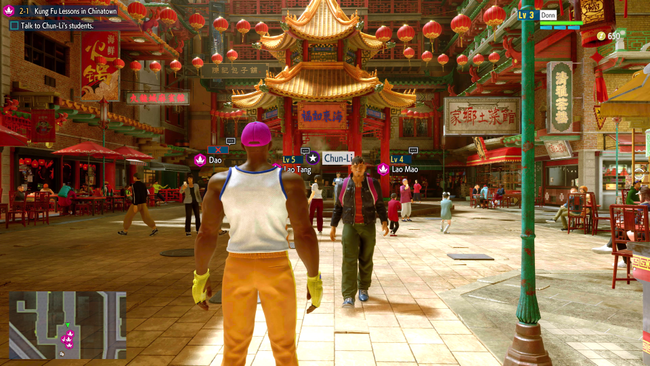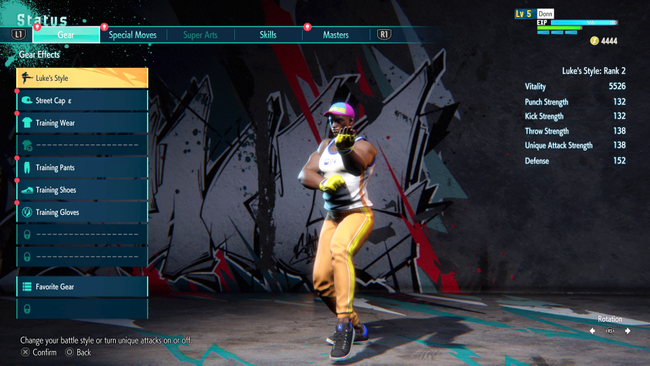
Street Fighter 6 is a role-playing game, actually
You know how the old adage goes: these days, everything can be considered an RPG. In my mind, the quintessential example of this came with Call of Duty’s big-time surge of popularity - which just so happened to be linked to leveling up, and the sublime dopamine rush that comes with watching bars fill up to indicate your in-game progress.
This fact has, over the years, made our life, as RPG Site, a bit of a pain. We’ve got a whole section of our FAQ dedicated to trying to puzzle out what makes a game an RPG. And we frequently have to debate - or argue - among staff about what we should cover. We bend the rules a lot, to be fair, which is why we cover things like visual novels. But, I digress - my point is, I never quite imagined we’d be covering Street Fighter. But here we are.
I’m deadly serious. After a lengthy hands-on taken up in pursuit of my games critic work over on VG247, it has become clear to me that, yes, Street Fighter 6 really is an action RPG. Or at least, its story mode is.
If you’re a pure role-playing fanatic and haven’t kept up to date on the background of this fighting game, here’s the rub: SF6 is split into a few different game modes. ‘Fighting Ground’, for instance, is all the modes you’ll be familiar with from the home ports of arcade fighters. ‘Battle Hub’ is home to online shenanigans. And ‘World Tour’ is something new - and very different - for the series.
Basically, Street Fighter 6’s World Tour is a little bit like Yakuza - or even Shenmue. Though its RPG hooks arguably run deeper than either of those games (the recent turn-based Yakuza excepted). In my hands-on, I got to experience over an hour of World Tour, and progress the story beyond where the publicly-available demo ends.

As part of World Tour, you’ll create your own avatar, and then be cast into an open-ended, fully explorable interpretation of Metro City, the Street Fighter universe’s version of New York. Your avatar is on a journey to become a master fighter - and you achieve that by grinding, training, and leveling up. Along the way you explore zones, talk to NPCs, visit stores, and undertake quests.
At first I thought the level up mechanic was more like a generic linear curve for your character - but quickly I realized that there’s more to this than that. World Tour’s open world allows you to challenge many of the residents of Metro City to friendly bouts in the name of getting stronger. No-good gang members will aggro and dash to challenge you on sight, leaving you with the choice to flee or fight. As you progress, the player character will come under the wing of Street Fighter’s most famous characters - training with them to learn their skills, which manifests as the ability to equip the moves and fighting styles of those classic fighters.
You can control the cosmetic look of your character via gear, but they’ll actually have full RPG stats beyond that. In the menus, you can see individual stats for Vitality, Defense, and the strengths of Punches, Kicks, Throws, and Unique Attacks. These all grow over time.
Combat might take place in the form of a classic 2D fighter, but in World Tour, it’s all driven by these stats. Numbers fly out of you and your opponent when you land or take a hit. The traditional health bar at the top of the screen straight-up reflects your Vitality stat. Because of the various fighting styles and move sets, there should be decent enemy variety - and there’s even some weird stuff to battle tossed in too, like drones and robot vacuums.

The more you train, the more powerful you’ll become - so even if you’re not too fighting game literate, there’s hope for you to grind it out.
This, obviously, is the purpose. That's the point. World Tour is colorful, filled to the brim with exuberant characters and nudge-and-wink nods to Capcom’s long history. But it’s also a training tool, designed to slowly but surely teach the curious how these games really work. Move sets, spacing - even the concept of whiff punishes is subtly taught in how the AI-powered enemies of World Tour will flash white when they’re in a vulnerable position.
I’m absolutely here for this - especially because Capcom has gone all-in on the RPG element. As you adventure across Metro City and other later zones that’ll unlock as the story progresses, you’ll complete side quests, advance the story, unlock more move sets, more customization options, and even gather consumable items that you can use in battle to give yourself a buff, an edge, or even to heal up when you’re on the ropes.

In my hands-on, what sealed the deal for me was just one of those classic RPG moments: I decided to challenge a character of a far, far higher level than I was. I’m no tournament winner, but I’m decent enough at Street Fighter - so the idea was simple. Could my level 7 character beat a level 25 character? The answer was no - at least not without help. But since I wasn’t keeping the save game in this build, I decided to rinse all of my buff and healing items in the battle to get an advantage. I won, and I watched the level up bar zip to full several times over, my reward for grinding out the difficult fight.
It feels right, both in concept and in execution. It feels sufficiently RPG to catch the attention of lovers of the genre who otherwise might not try fighting games. And if it can be a trojan horse that’ll help some fans of my favorite genre get into another of my favorite genres, I think it can only be a good thing.
A Street Fighter 6 demo, which includes a small section of what we played of World Tour, is available on PC, Xbox, and PlayStation now.